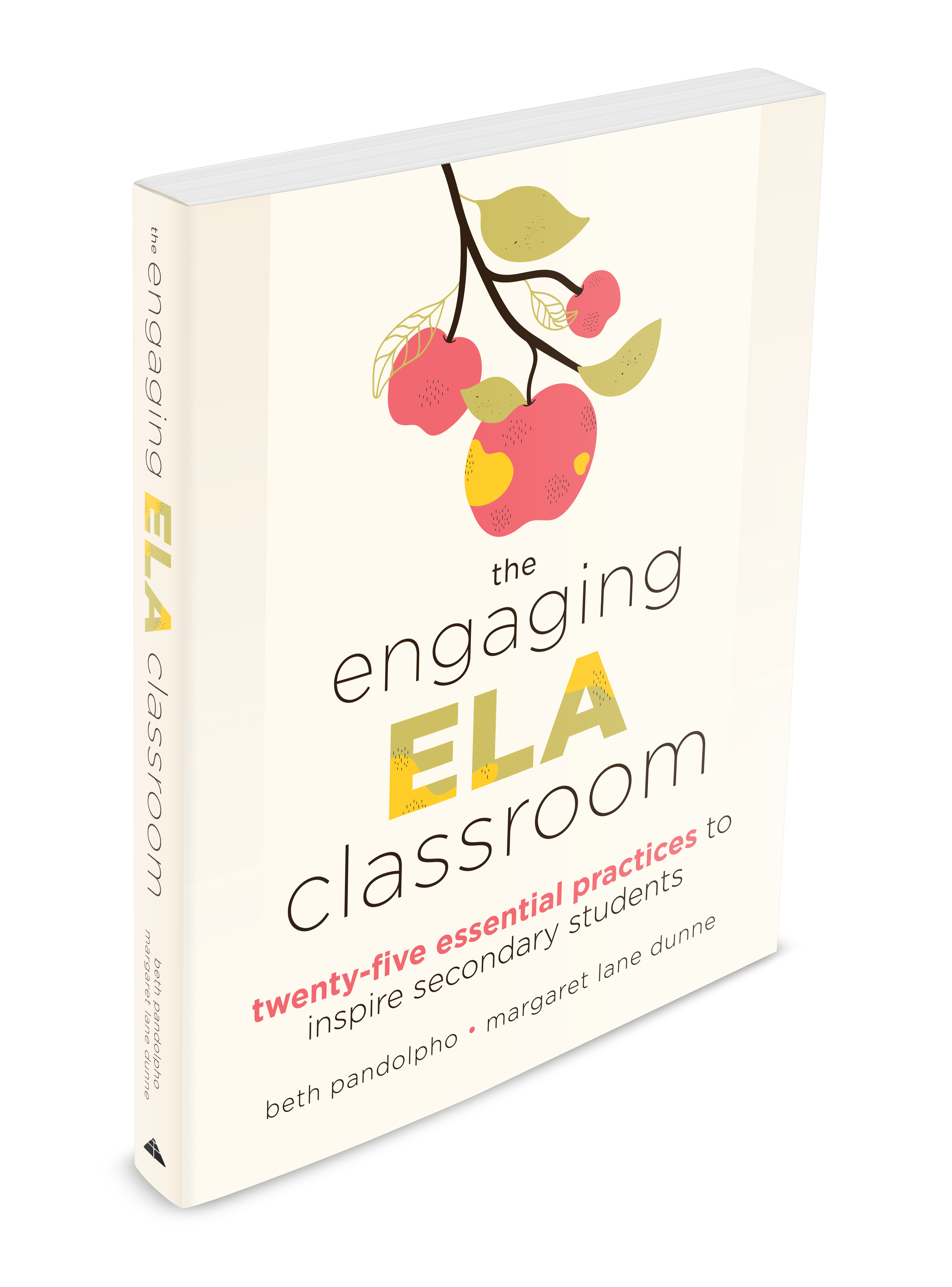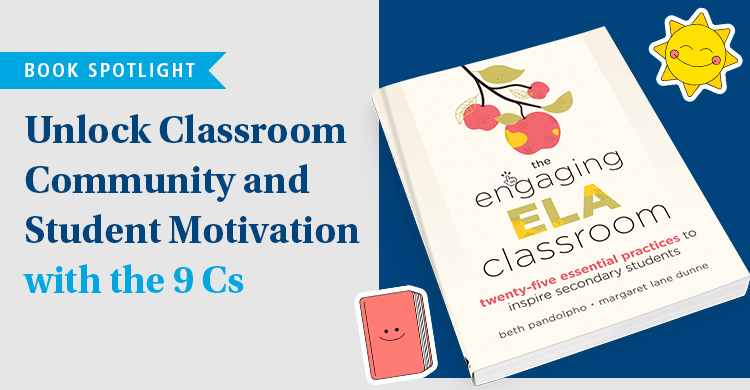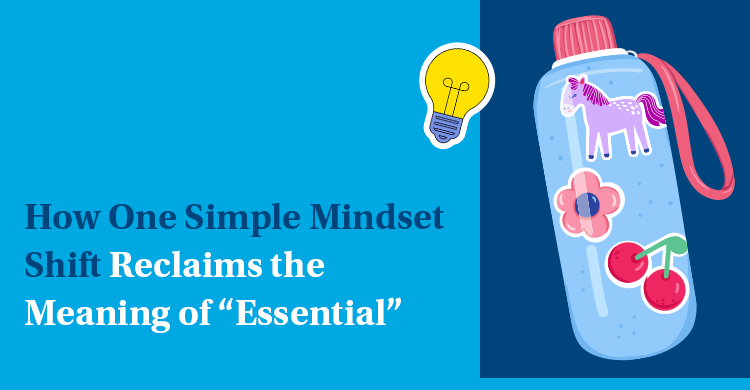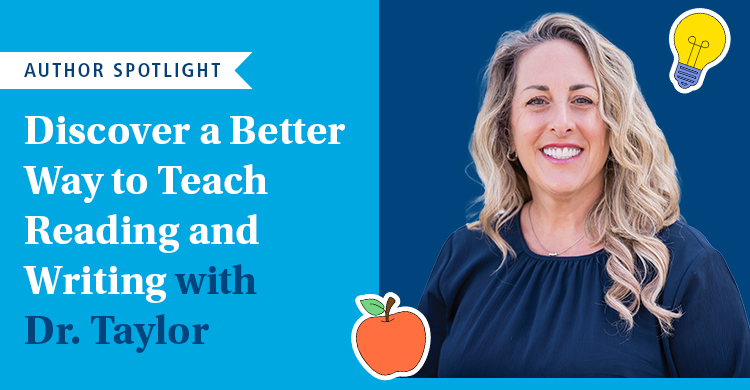With so much competing for our students’ attention, the real challenge for teachers is to create a classroom community where students are curious, appropriately challenged, and motivated to learn. Prioritizing these 9 Cs for Student Engagement will give students something worthy of their attention: invitations to learn and grow in ways that are relevant to their lives.
- Challenge
- Curiosity
- Competence
- Creativity
- Choice
- Collaboration
- Community
- Conversation
- (Meta) Cognition
Pass the Mic: A powerful way to apply the 9 Cs 
In our upcoming book, The Engaging ELA Classroom: 25 Essential Practices to Engage Secondary Students, “Essential Practice 22: Pass the Mic” (from Chapter 5: Engaging Students in Finding Their Voice) incorporates the 9Cs into a lesson design that fosters student engagement. This lesson invites students to select a character from a shared text—ideally one who has very few opportunities to speak often because they lack courage or opportunity.
If you think about it, who among us doesn’t have a fictional character whose presence has lingered long after the novel, play, or film has ended? Imagine if we could give voice to these characters and breathe life into them once more . . . What might they have to teach us? When students look critically at these characters and their contexts, they begin to grow curious about how these characters feel—imagining what they might say if given the chance.
In this practice, we pass the mic to our students, so they can pass the mic to a character who might have something more to say.
Fostering empathy and critical thinking
The goal of this practice is to sharpen students’ critical reading and creative writing skills as they develop empathy for a character whose situation they may have never before considered. Through this practice, students learn that what authors choose to exclude in a text is often as significant (or even more so) than what they include.
Looking back through the text, students first explore why their chosen character is silenced or marginalized. They closely examine what the textual evidence reveals about the character from their sparse dialogue, their behavior, and what other characters say about them.
Designing and delivering the monologue
To prepare students to “pass the mic” and compose a monologue for this character, students adopt the persona of the character and answer a series of reflective questions from the character’s perspective, such as:
- What is something you often think about?
- What is one of your most important goals?
- What do you worry about?
Based on these responses, students set an intention for the monologue (e.g., creating a character’s backstory, uncovering a character’s feelings about an event or conflict presented in the text, or revealing the character’s regrets). Once students draft their monologue, they work with a partner to translate their writing into a short speech to deliver to the class. As students make final decisions about the content, style, diction, and tone of the speech, they keep this question top of mind: What does your character most want the audience to know?
Some of the most memorable speeches we’ve heard include:
- Of Mice and Men: Students have given Curley’s wife a name and voice and shared specific details about her hopes and aspirations—beyond wanting to go to Hollywood.
- The Great Gatsby: Students have explored Daisy’s feelings about ending her relationship with Gatsby and her decision to stay with Tom, explaining the factors that informed her choices.
- Romeo and Juliet: Students have spoken on behalf of the Nurse, offering insight about the Capulet family and Juliet’s childhood.
How each of the 9 Cs comes alive in Pass the Mic
Passing the Mic provides an opportunity for us to reinforce our classroom values and norms, which include demonstrating empathy and deep respect, as well as providing space for each other’s voices. Here’s how each of the 9 Cs is evident in the Pass the Mic practice:
| Challenge | Students are challenged to align their monologue with the author’s portrayal of the character. |
| Curiosity | Students follow their curiosity and ask the character questions that genuinely interest them. |
| Competence | Students sit in the author’s chair, taking on the power and responsibility of characterization. |
| Creativity | Students step into a character’s inner world and apply their understanding of the text to imagine and articulate what is hidden inside them. |
| Choice | Students are encouraged to select minor or marginalized characters, but ultimately, they select the characters, the contexts, and the occasions for their monologues. |
| Collaboration | Students benefit from each other’s feedback through structured protocols to strengthen their monologues. |
| Community | Students support each other as each one “takes the stage” to perform their monologue and embody the character with the guidance of only a few cue cards. |
| Conversation | Students engage in conversation after each mic performance. Students first journal and then verbalize, “What I now realize about ______ that I didn’t understand before is . . .” |
| (Meta) Cognition | Students reflect on the process of passing the mic to a minor character by answering reflection questions such as, “If you had more time or another opportunity to reveal the character through the monologue, what would you add?” We also ask students to consider how this practice can foster empathy for others beyond the text. |

Applying the 9 Cs to any lesson
The 9 Cs for Student Engagement offer a framework to help teachers create interesting and enjoyable tasks that promote deeper learning. Prior to each lesson or unit, you can use the 9Cs to ask yourself whether the practice:
- Presents a challenge
- Ignites curiosity
- Develops competence
- Sparks creativity
- Offers choice
- Promotes collaboration
- Builds community
- Encourages conversation
- Allows time for metacognitive reflection
It may not be possible to incorporate the 9 Cs into every lesson, but if we want to capture our students’ attention and ensure they are primed for engagement, the 9 Cs are a simple framework that can help guide our decisions.
💡Join us in reimagining engagement for today’s learners
Explore more blogs featuring classroom-tested strategies and actionable ideas from Solution Tree experts to help every student thrive.
About the authors
Beth Pandolpho is an instructional coach for grades 6–12, and she has taught English at the high school and college level for over 20 years. She is passionate about engaging in work that promotes equity and access for both teachers and students.
Margaret Lane Dunne, EdD, has over 20 years of teaching experience and is a faculty member at Great Neck South High School. She is also an author and a presenter who enthusiastically shares her insights about better ways to engage students.






